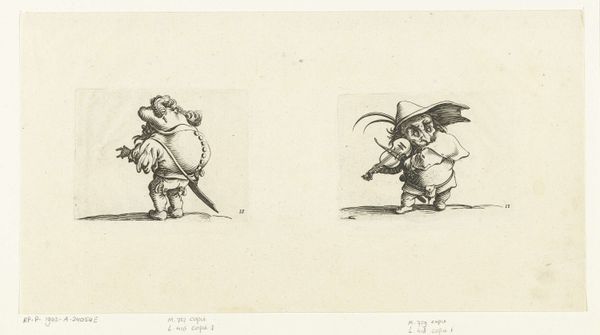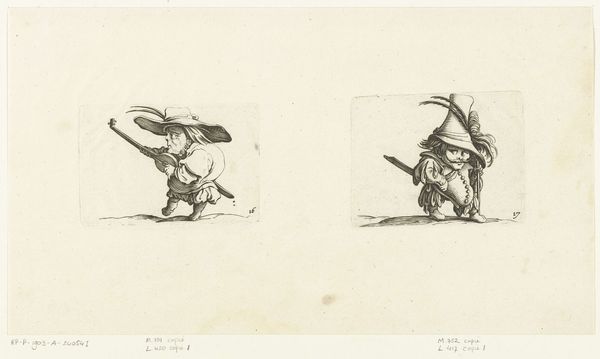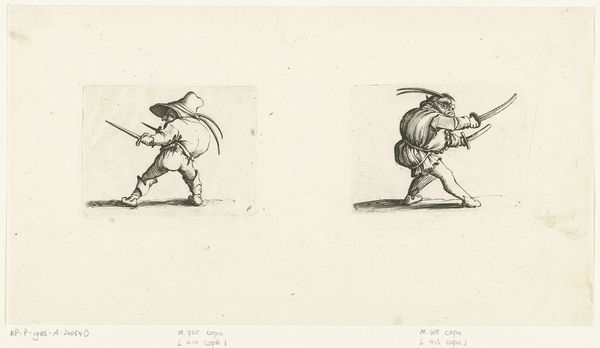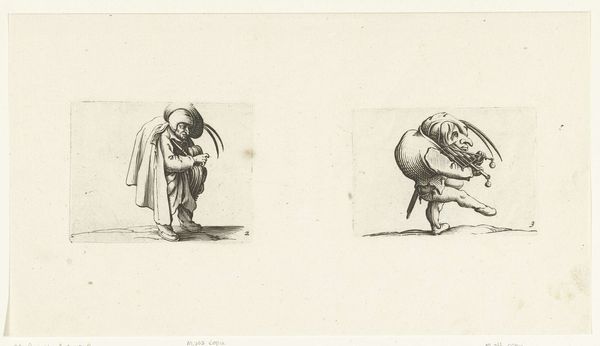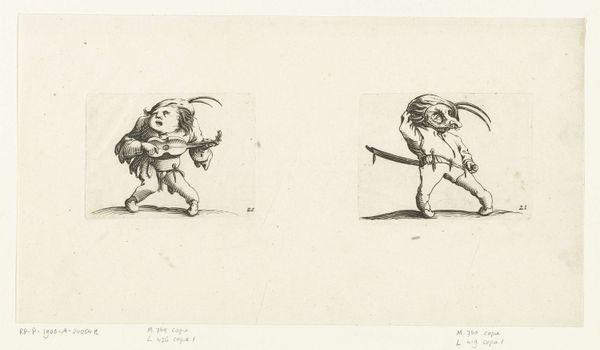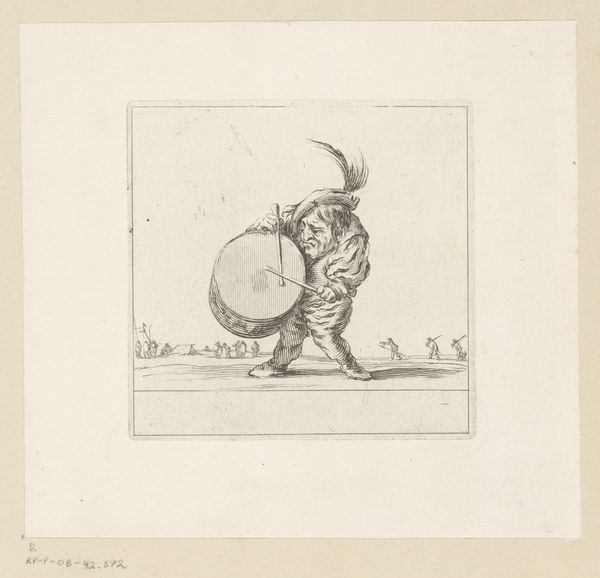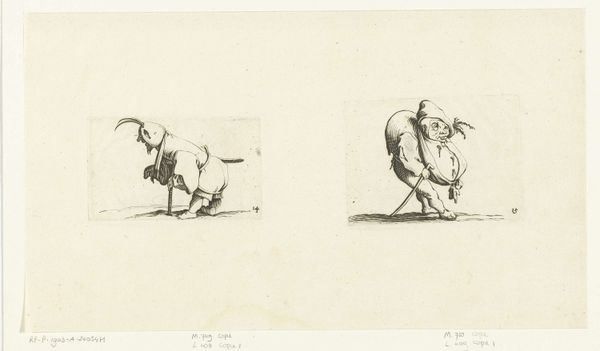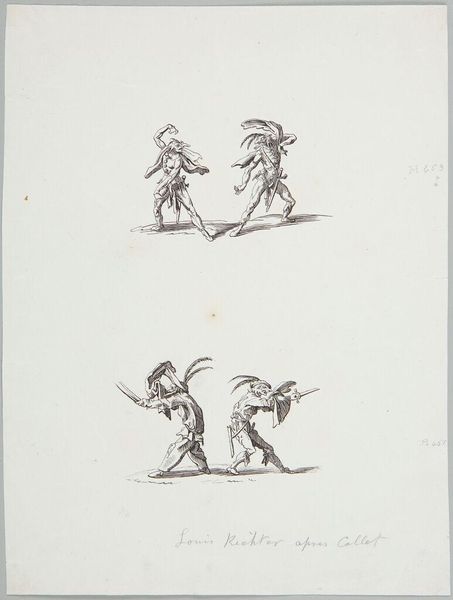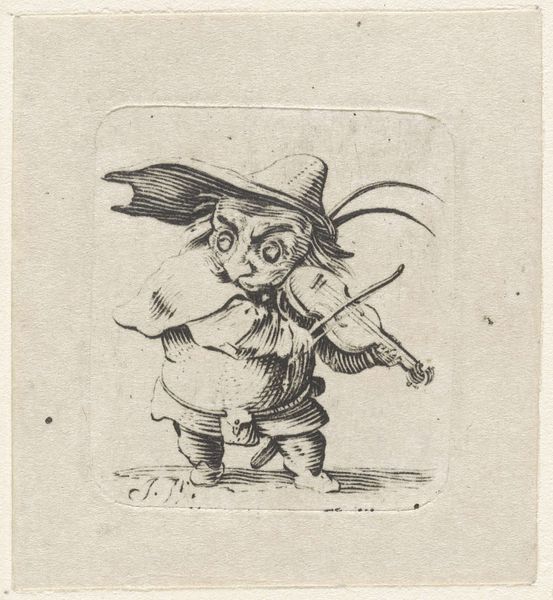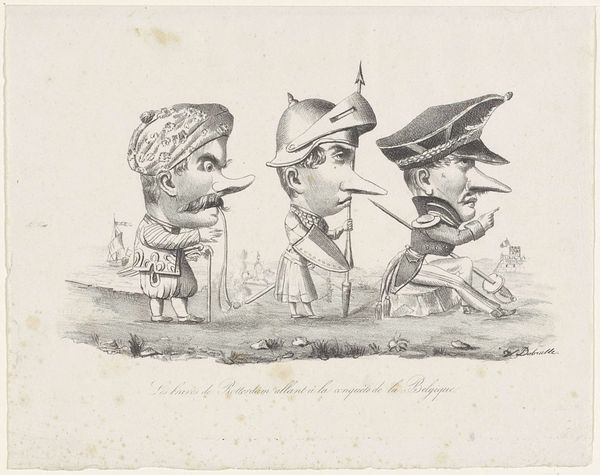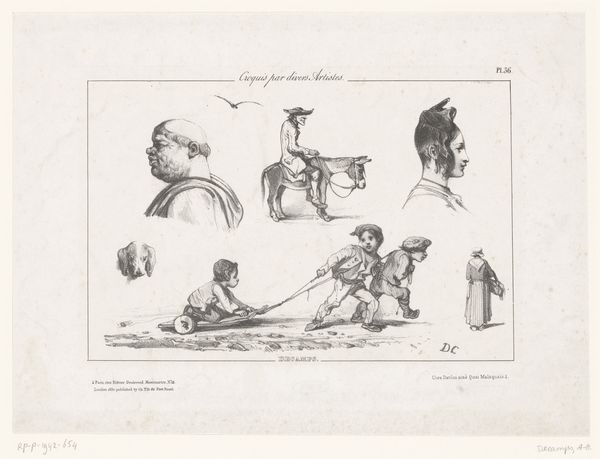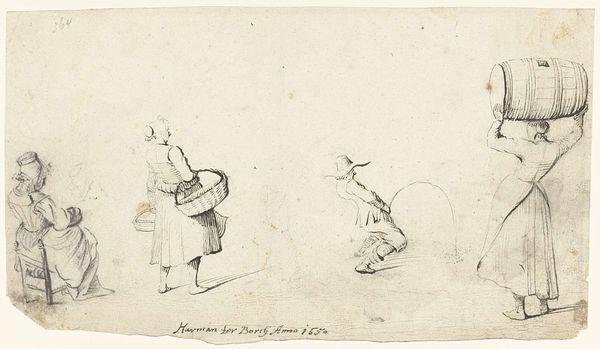
Dwerg met fluit (flageolet); Dwerg met zwaard, een knopenrij op de buik 1621 - 1676
0:00
0:00
abrahambosse
Rijksmuseum
etching
#
portrait
#
baroque
#
etching
#
pencil sketch
#
figuration
#
line
#
genre-painting
Dimensions: height 61 mm, width 85 mm, height 64 mm, width 86 mm, height 155 mm, width 277 mm
Copyright: Rijks Museum: Open Domain
Abraham Bosse made this print, "Dwarf with flute and Dwarf with sword", using etching, a printmaking technique, in the 17th century. Prints like this circulated widely in France and beyond. They reveal a culture grappling with social hierarchy and the representation of marginalized figures. Here, we see two figures presented for amusement. The 'dwarf' was a common trope, often associated with entertainment or courtly life, but also with social exclusion. Bosse’s choice to depict these figures with both musical and martial attributes complicates their image. The flute suggests frivolity, while the sword alludes to a readiness for violence, perhaps hinting at the complex social roles and stereotypes assigned to individuals with physical differences in early modern Europe. To understand this image better, one might delve into the histories of the court and the theater, or consult medical texts of the time to explore how disability was understood and represented. By doing so, we reveal the politics embedded within this seemingly simple image.
Comments
No comments
Be the first to comment and join the conversation on the ultimate creative platform.
